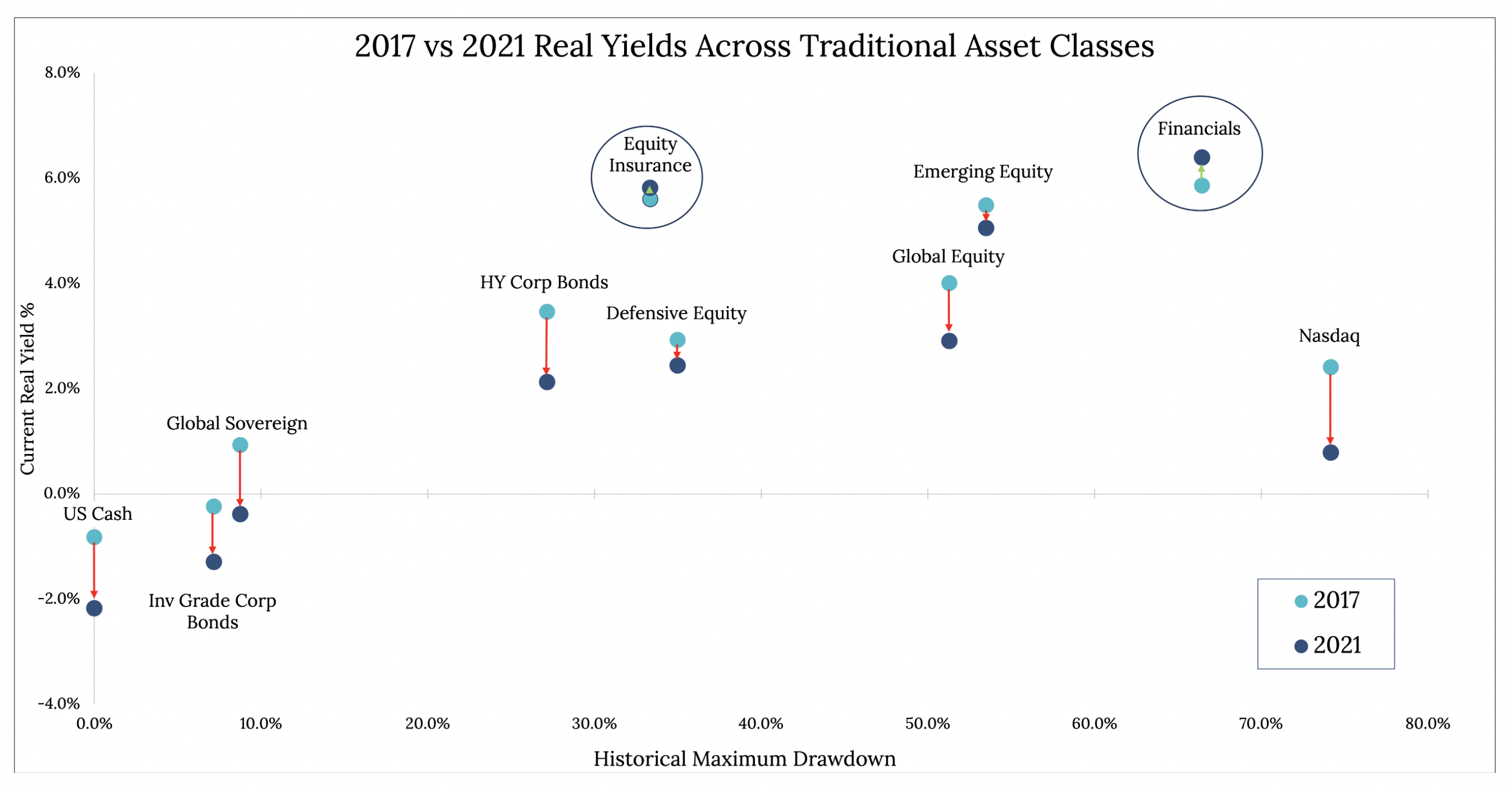Yield and wages
There is a lot of noise in the financial press (meme stocks, crypto, central bank policy, etc.) and so it’s hard to really know what to focus on.
In times like these, it’s important to revert to first principles and check in on the real yield (the nominal yield minus the rate of inflation) on a variety of traditional asset classes.
Below is an update of a piece of work we did in 2017 originally developed for a conference, where we discussed the opportunities for diversification across asset classes and within strategies.
We’ve updated it for the end of July 2021 and unsurprisingly the real return on all asset classes has fallen – in some cases dramatically highlighting just how hard it is going to be going forward to generate real returns through diversification of traditional asset classes.

Source: Supplied.
However the return from option premium (the income generated from selling put options to enter stock positions) represented as Equity Insurance, and Financials are the exceptions and remain stable. In a low expected return environment, this will become more and more important.
Important not only for returns, but to remind investors not to be complacent – not to expect that the recent past where most total return has come from growth will continue, when the market conditions have clearly shifted. Complacency could be investors’ undoing and overwhelmingly the market is positioned for the status quo.
To illustrate this level of complacency in another way is via the Jolts Job Index in the US.
The opening number (jobs open) in July was the largest this millennium – and more than enough in theory to take unemployment to zero.
Jolts matters – because key to persistently higher prices is wage inflation and the rent component of CPI.
This matters for investors exposed to US equities, in particular growth equities as a move in 10yr bond yields of 10bsp (assuming the dividend yield remains equivalent to the bond yield as it currently is) equals a 7% decline / increase in the index if it were fully priced. So if consensus is right that the 10yr treasury ends the year at 1.8%, this implies a 28% market decline in the US index.
If they aren’t already, investors need to diversify - by sector, geography, style and - crucially - return type, and make sure they act on first principles and leave the noise to others.
Never miss an insight
Enjoy this wire? Hit the ‘like’ button to let us know. Stay up to date with my content by hitting the ‘follow’ button below and you’ll be notified every time I post a wire. Not already a Livewire member? Sign up today to get free access to investment ideas and strategies from Australia’s leading investors.
5 topics

